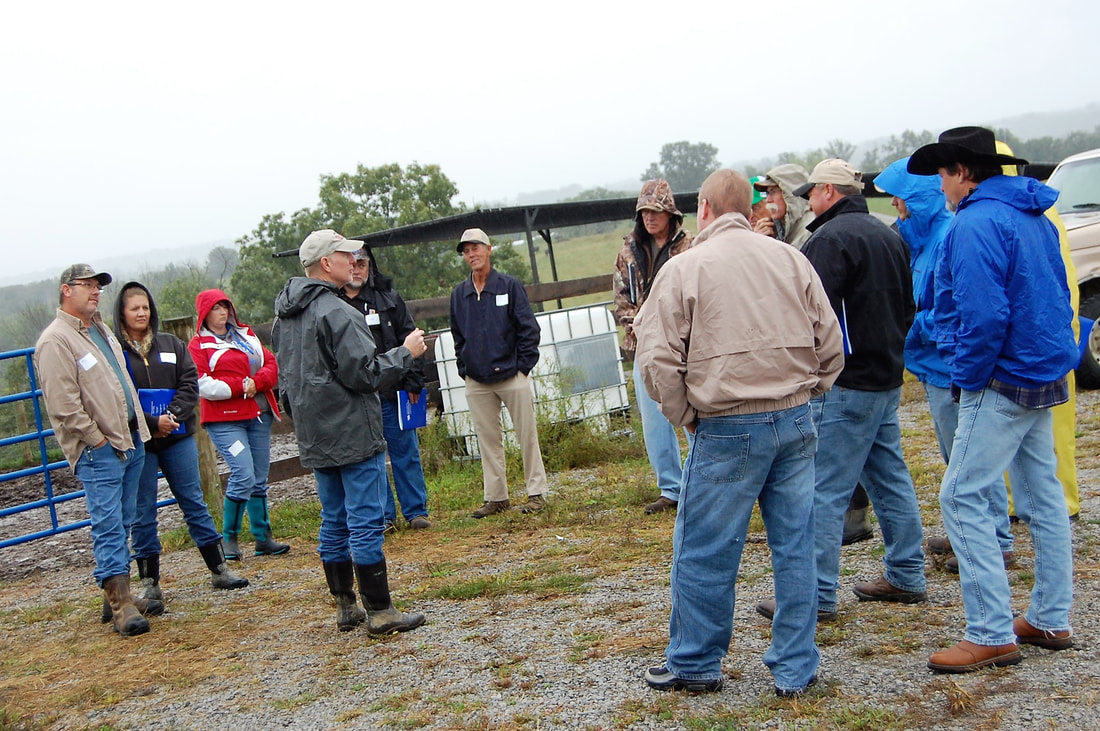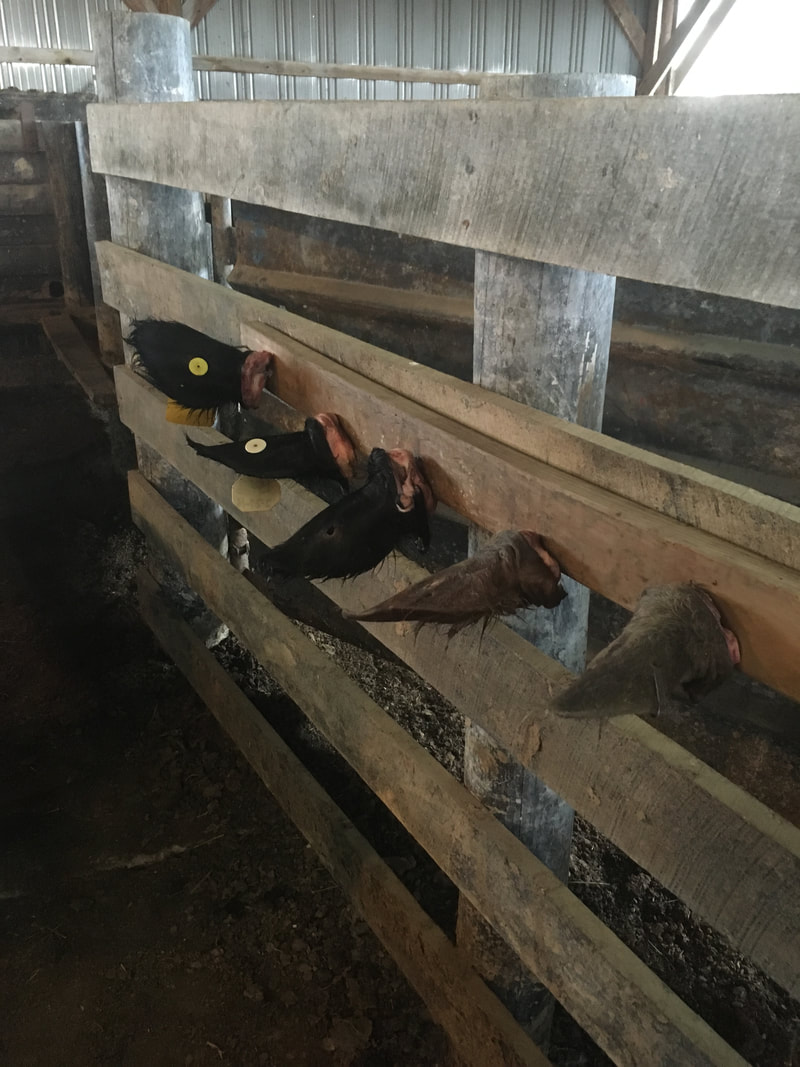|
On September 13th we hosted a weaning workshop at ESF. This was the second year that we have held a workshop focusing on the proper way to wean calves. There were 35 producers in attendance despite it being a wet and rainy day. To start the workshop producers were split into three groups and rotated through different stations which covered different parts of the weaning process. The first station was with Dr. Jeff Lehmkuhler discussing how to develop a proper feed ration for calves. Participants got to develop the feeding protocol that would be fed to the calves for the next 30 days until the weaning trial was over. The three different rations used included a 2-way blend, 3-way blend, and a 5 days of medicated stress feed followed by 25 days on a custom ration. All rations were approximately 12-13% protein. The second station was conducted by Tim Dietrich, who works on beef cattle marketing for the Kentucky Department of Agriculture. Tim discussed what buyers are looking for with weaned calves and what may get discounted when it gets graded at the sale. Tim has experience grading calves for the CPH sales and shared some good information with the group. The third station was chute side processing calves. Dr. Blue and Austin Sexten, both with Elanco, helped us work the calves. Dr. Blue talked about chute safety and common hazards to look for before you begin processing the cattle. Each group got a chance to work 10 head of steers through the chute. The calves were weighed, vaccinated, and dewormed. The steers had already been implanted so we did not implant anything the day of the workshop. Having the producers broken up into groups allowed everyone the opportunity to practice each step in the process. Even though we did not implant the steer calves that day, we still wanted to give the producers the opportunity to perform the procedure. To be able to do this, Austin Sexten brought some ears that had been harvested from a processing facility and we screwed them to a 2x4 so that folks could practice implaning with them. The idea worked really well, as people who would otherwise be timid to try implanting on a live animal for fear of doing it wrong, hurting the animal, or the challenge of implanting a moving target, those people jumped right in an everyone practiced implanting on the ears. A big thank you to Austin for the idea and for helping folks learn how to properly implant cattle. After everyone had been through all the rotations, we came back together to listen to Dr. Steve Higgins talk about facility considerations when weaning cattle. Barns, shade, and proper access to water were all discussed. After going back to the barn to eat lunch, Austin, Dr. Blue, Dr. Lehmkuhler, and Dr. Kenny Burdine all spoke about topics ranging from vaccination protocols, to developing feed rations, and marketing weaned calves. After the weaning workshop the three different groups of steers were kept in the barn and fed one of the three rations along with free choice hay. The heifers were all sorted off and fed the 3-way ration outside, and at a lower rate than the steers. This was done for 30 days and then we reweighed everything. Dr. Lehmkuhler put together the following results: A few quick things to point out:
1. We did not treat any sick calves. This is due to the fact that these were all home raised calves that had been properly vaccinated and thus were exposed to the lowest amount of stress during weaning. 2. The average daily gains were all about the same for the steers, however with cost of gain for the 3-way feed was the cheapest at $0.34 cents per lb. 3. It did make us money to background the calves this year. By weaning them, vaccinating & deworming, and feeding them for 30 days we were able to capture an additional $86 per head. So after factoring in all the cost associated with weaning them, we made an additional $2,580 on 30 head of steers by keeping them an additional 30 days versus selling them the day they were weaned. Comments are closed.
|
Archives
June 2024
Categories
All
Welcome |
CONTACT US |
EMAIL SIGN UP |
|
Eden Shale Farm
245 Eden Shale Rd. Office: (859) 278-0899 Owenton, KY 40359 Fax: (859) 260-2060 © 2021 Kentucky Beef Network, LLC.. All rights reserved.
|
Receive our blog updates
|















 RSS Feed
RSS Feed
